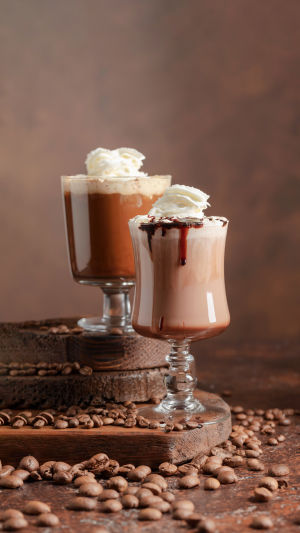When winter’s chill settles in, nothing feels as comforting as wrapping your hands around a steaming mug of hot chocolate. But did you know that this drink beloved by all ages has some intriguing variations across the globe?
Each region adds a unique twist - some focus on creamy richness, while others go for intense flavors or unexpected spices. In this article, we’ll journey around the world, uncovering some fun and fascinating ways different countries make their hot chocolate so distinct.
<h3>1. Mexico: Spicy and Full of Flavor</h3>
Mexican hot chocolate, or champurrado, offers a spicy kick that sets it apart. This version blends cocoa with cinnamon and even a hint of cayenne pepper, creating a bold, flavorful drink. Often thickened with masa (corn flour), champurrado has a unique texture and is typically unsweetened, giving it a more rustic, earthy taste. This traditional treat is also whipped with a molinillo, a wooden whisk, to achieve a frothy consistency. It’s a rich drink perfect for those who crave a bit of warmth with a spicy twist.
<h3>2. Spain: Thick Enough for Churros</h3>
In Spain, hot chocolate, or chocolate caliente, is so thick it’s practically a dip! Spanish hot chocolate often accompanies churros, long pieces of fried dough. Cornstarch is used to thicken the drink, giving it a rich, pudding-like consistency that’s decadent enough to stand alone yet ideal for dipping churros. Spaniards tend to enjoy this treat for breakfast or as an afternoon snack, making it a deliciously indulgent part of their daily routine.
How to Make The Best Hot Chocolate Of All Time (4 ways)
Video by Joshua Weissman
<h3>3. Italy: Dessert in a Cup</h3>
If you’ve ever craved a drinkable dessert, Italian cioccolata calda is the answer. Italian hot chocolate is remarkably dense, thanks to the addition of cornstarch and heavy cream. This drink is closer to melted chocolate than any traditional cocoa, making it thick enough to almost eat with a spoon! Perfect for chocolate lovers, cioccolata calda is typically served in small portions since its rich flavor can be quite filling.
<h3>4. France: Silky and Sophisticated</h3>
French hot chocolate, or chocolat chaud, takes a smooth and slightly bitter approach, often skipping the sugar or opting for minimal sweetness. With dark chocolate as the star, it’s a more mature, refined drink that balances bitterness with creamy milk. French hot chocolate is known for its silky texture, created by whisking melted chocolate with milk. Some versions even add a touch of espresso powder or sea salt, giving it an extra depth that makes each sip a bit of a luxurious experience.
<h3>5. The Philippines: A Breakfast Staple</h3>
In the Philippines, tsokolate is a breakfast staple, typically made from locally produced cacao tablets known as tablea. It’s unsweetened and quite strong, often served with a piece of sweet bread called pan de sal. Filipino hot chocolate is made by dissolving these tablets in hot water or milk and whisking with a traditional batidor (whisk) until frothy. This no-fuss drink is perfect for those who love a strong, bold chocolate flavor without added sweetness.
<h3>6. America: The Classic Comfort Drink</h3>
American hot chocolate is perhaps the most recognizable, especially to those who enjoy a more casual, sippable cocoa. Thin and usually made with milk and cocoa powder, it’s often sweetened and topped with marshmallows or whipped cream for extra comfort. Unlike its thicker European cousins, American hot chocolate is more of a cozy treat than an indulgent dessert, making it the go-to drink for cold evenings and holiday gatherings.
Hot chocolate is a drink that truly shows the personality of each culture, from Mexico’s spicy warmth to Italy’s dessert-like decadence. Next time you’re craving this classic winter treat, why not trying a variation from another country? Whichever style you choose, don’t forget to pay attention to the ingredients - whether it’s the bold Mexican spices or the creamy Italian consistency, each one brings out a different side of chocolate that’s sure to warm you up.





